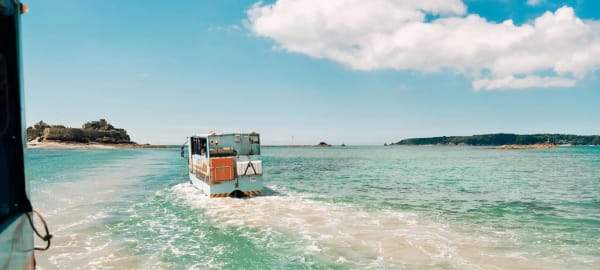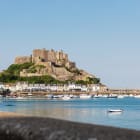
Since the 18th century Jersey has been one of the most heavily fortified parts of the British Isles. The American War of Independence, the French Revolutionary War and the Napoleonic War all kickstarted stronger building programmes for the island's defences
For centuries Jersey had reason to defend itself. The coastline is full of built evidence for this: castles, Martello and Conway towers, guardhouses and barracks are amongst the historical sites that can still be visited. Jersey became an island 7,500 years ago and since then the sea has been regarded as the first line of protection against any attacks, with beaches thought to be particularly vulnerable to enemy ships landing. So, the main defence sites in Jersey are sited on its coastline, ready to spot any unwelcome guests. Since the 18th century Jersey has been one of the most heavily fortified parts of the British Isles. The American War of Independence, the French Revolutionary War and the Napoleonic War all kickstarted stronger building programmes for the Island’s defences.
For centuries, the major strongholds in Jersey were its castles. Mont Orgueil Castle was built on a site that had been fortified since prehistoric times. The construction of the present castle began in 1204 but wasn’t named Mont Orgueil until occupation by the French during the War of the Roses in 1462. The Castle would then be extended and refurbished several until the late 15th and 16th centuries, when it was substantially refortified as an artillery fortress.
Mont Orgueil was well placed to defend, with cliffs on three sides, and the sea on the fourth. But defense castle builders struggled to compete with the advances of gunpowder and cannon and by 1600, Mont Orgueil had been replaced by Elizabeth Castle as the seat
of military power in the Island. The building was then used as a prison. In the 1790s it became the headquarters for a spy network and a refuge for aristocrats during the French Revolution. The Castle gradually fell into ruin, despite various royal visits. Eventually it was only open to the public for one day a year on Easter Sunday. In 1907 the site was given over to the people of Jersey and became a museum from 1929.
The spot where Elizabeth Castle sits – the Upper Ward or Mount – was a religious priory from 1155 until the late 16th century. The Islet, as it is known, is half a mile out to sea and is connected to mainland Jersey at low tide by a causeway. So, for seven out of every 12 hours it can only be reached by boat. In 1594 the new castle was begun as a fortification project, led by Paul Ivy, a Crown Engineer. Six years later the ‘New Castle’ was renamed Elizabeth Castle (Fort Isabella Bellissima) by Sir Walter Raleigh, in honour of Queen Elizabeth I. A statesman and royal favourite, Raleigh was governor of Jersey from 1600 to 1603. Building work took place at the Castle during his time as Governor and later from 1626 to 1636. The next period of building work took place during the English Civil War of 1642, including the addition of a fortified windmill and Fort Charles. The Castle was successfully held for the King until 1651, when the Island finally surrendered to the Parliamentarians.
Elizabeth Castle was eventually built over two small islands which had been joined together in 1668 by enclosing the tidal ditch between them. New barracks and officers’ quarters were added in the first half of the 18th century. But eventually the tidal nature of the location was its downfall. With the French invasion during the Battle of Jersey in January 1781, troops garrisoned at the Castle were cut off by the tide and unable to fight. After that Jersey rethought its defenses and a new fortification: Fort Regent, was built and the defence of the Island moved there in 1814. Elizabeth Castle continued to be a military garrison until 1923, when it was sold by the British Government to the States of Jersey. It would be fortified once again by the German Forces during the Occupation of 1940 to 1945.
Fort Regent is a late Georgian fort built on Town Hill overlooking St Helier. Fortifications were first constructed on the hill in the mid-18th century but construction of the Fort itself was completed in 1814 and was named after the Prince Regent. The military importance of Fort Regent declined steadily during the first half of the 20th century, when it was used primarily as a barracks.
Today both Elizabeth Castle and Mont Orgueil Castle are managed by Jersey Heritage. Mont Orgueil Castle is one of the best examples of medieval castle you can visit. It has been imaginatively reinterpreted. At Elizabeth Castle, as well as exploring the site and its history, you can see regular musketry demonstrations and on some weekends there are live recreations of the garrison of 1781 – the time of the battle of Jersey – when historical Interpreters give displays of musket and cannon firing and civilian life.
History
The Coin Hoard comes home
The story of Le Câtillon II, the largest hoard of Iron Age gold and silver coins, jewellery and ingots ever found in Western Europe.
Places to Visit
Mont Orgueil Castle
A medieval castle with links to the English Crown and amazing views across to France.
Places to Visit
Elizabeth Castle
Visit a fortress just off the coast of Jersey to explore 400 years of history.








